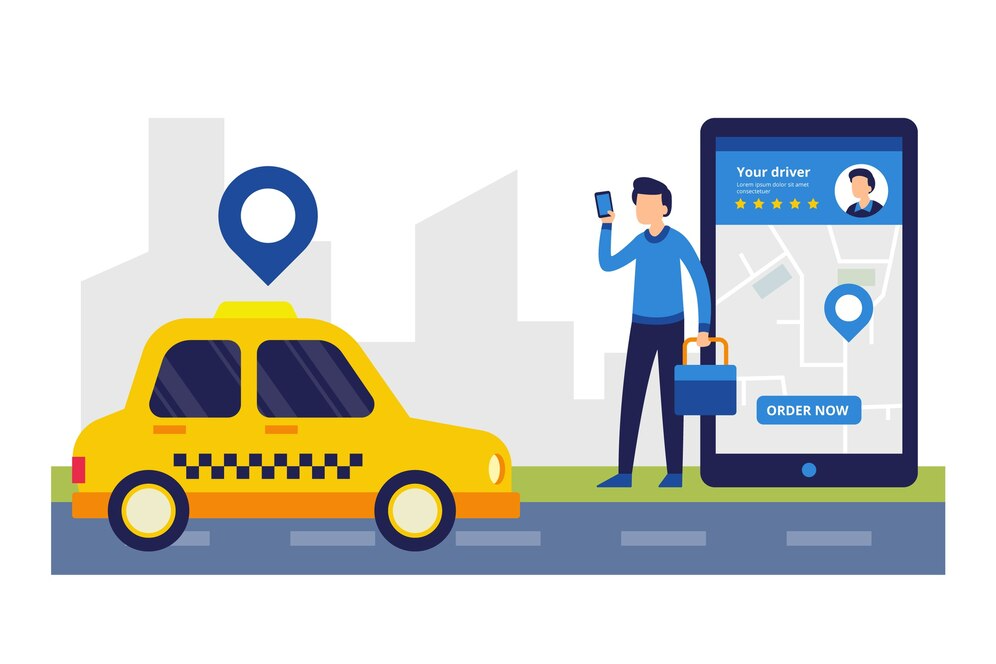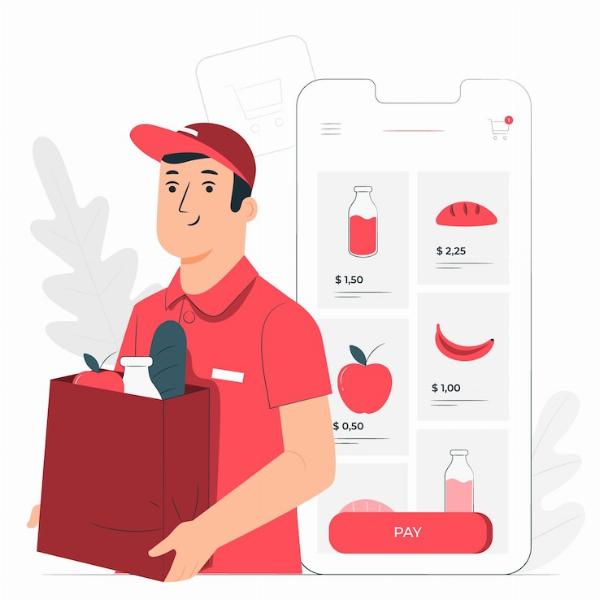 Social Media Content Packs – Stay Active Without Lifting a Finger!
Social Media Content Packs – Stay Active Without Lifting a Finger!
Behind the Scenes: The Strategy Driving Waze Business Model
Written by Smith Johens » Updated on: June 17th, 2025

Waze, the popular GPS navigation app, is more than just a tool for getting from point A to point B. Behind its user-friendly interface lies a strategic business model that combines technology, community involvement, and advertising in unique ways. Since its acquisition by Google in 2013, Waze has continued to innovate, leveraging crowdsourced data and strategic partnerships to maintain its competitive edge in the navigation industry. This article will explore the strategic foundations that drive the Waze business model, examining how it balances user engagement, data monetization, and brand partnerships to offer a dynamic, free-to-use app.
The Foundations of Waze’s Business Model
Crowdsourced Data Collection
Waze’s business model hinges on crowdsourced data provided by its users. By enabling drivers to report real-time information on traffic conditions, road hazards, accidents, and police presence, Waze turns its user base into an active community contributing valuable data. This information not only enhances the accuracy of the app’s navigation features but also distinguishes it from traditional GPS systems that rely solely on mapped data.
Crowdsourcing allows Waze to generate a continuous stream of valuable data without requiring costly sensor installations or infrastructure, which traditional navigation systems depend on. This model provides users with highly accurate, real-time information, creating a community-driven experience that enhances user satisfaction and increases app usage.
Free-to-Use Platform with Monetization Through Advertising
Waze’s free-to-use model is crucial to its growth, attracting a large user base that contributes to its data collection process. Waze monetizes this user base primarily through location-based advertising, a strategy that has grown increasingly popular in recent years. The app's advertising platform allows businesses to place ads that reach users while they are navigating, capitalizing on moments when they may be nearby and receptive to visiting stores or restaurants.
With ad formats such as branded pins, takeover banners, and location-based “Zero-Speed Takeover” ads (which appear when drivers come to a stop), Waze provides companies with highly targeted advertising opportunities. This approach ensures that advertisements are relevant to the user’s journey, increasing engagement without detracting from the navigation experience.
Key Strategies That Drive Waze’s Success
User Engagement and Gamification
Waze excels in keeping users engaged by turning navigation into an interactive experience. The app incorporates elements of gamification, such as point systems, badges, and user rankings, which encourage users to actively participate in data collection. Users are rewarded with points for reporting incidents, traffic conditions, and hazards, and can also receive recognition through badges or ranking on local leaderboards.
This gamified experience enhances user loyalty, as drivers feel a sense of involvement and contribution. For Waze, this continuous engagement is invaluable, as it creates a steady flow of up-to-date, real-world data. Traditional navigation tools lack this community-driven input, which limits their real-time accuracy compared to Waze’s crowdsourced model.
Hyperlocal Advertising Strategy
One of Waze’s most successful strategies lies in its approach to hyperlocal advertising. By targeting users based on their immediate geographic location, Waze allows businesses to advertise to drivers in real time, making ads contextually relevant and increasing the likelihood of user engagement. This hyperlocal advertising format, built into the navigation experience, allows brands to reach potential customers at the exact moment they are near a location, adding a layer of precision to marketing efforts.
This strategy not only brings value to businesses looking for local customers but also integrates seamlessly with Waze’s navigation. For instance, a restaurant could display an ad when a user is nearby, offering a discount or promotion. The strategic integration of advertising makes it a non-intrusive part of the Waze experience, which has helped the app maintain its popularity and avoid user backlash.
Partnership with Municipalities and Transportation Departments
In addition to user-generated data, Waze has formed partnerships with cities and transportation departments under its Connected Citizens Program (CCP). These partnerships allow for an exchange of data between Waze and local governments, providing Waze with official traffic data while helping municipalities improve their transportation management.
For instance, cities gain access to Waze’s real-time traffic data, which can be used to plan construction work, manage traffic flow, and respond to incidents more effectively. In return, Waze benefits from official data on road closures, construction, and other relevant information. This strategic partnership enhances Waze’s data accuracy and benefits users by providing them with a smoother, more informed navigation experience.
Continuous App Improvement through User Feedback
Waze has cultivated a dedicated user base by actively incorporating feedback to improve its services. The company regularly updates its app to include new features and refinements based on user requests and feedback. For example, Waze introduced carpooling features and integrated music streaming after listening to users’ requests for a more convenient navigation experience.
In traditional models, navigation apps rely on data engineers to identify potential improvements. Waze’s community-driven approach to improvement, however, leverages users’ input directly, reducing research and development costs and ensuring that the app evolves in line with user expectations. This constant improvement cycle makes Waze more responsive to its community than many competitors.
The Technology Behind Waze’s Success
Real-Time Navigation Algorithms
Waze’s navigation technology incorporates sophisticated algorithms to deliver real-time route optimization. As drivers use the app, it continuously processes incoming data from users, recalculating routes as conditions change. By evaluating multiple data points, including traffic congestion, estimated travel times, and road conditions, Waze provides the most efficient route options.
This advanced navigation system enables Waze to differentiate itself from traditional navigation apps, which often rely on static or periodically updated data. By leveraging dynamic, real-time data from its user base, Waze’s navigation technology remains highly adaptable and effective.
Leveraging Google’s Resources Post-Acquisition
Since its acquisition by Google, Waze has gained access to some of Google’s resources and infrastructure, including its extensive mapping technology. Although Waze remains a standalone product, Google’s support has strengthened Waze’s mapping capabilities and allowed it to maintain its real-time accuracy.
This partnership has also benefited Google, as it can use Waze’s data and technology to improve Google Maps. The complementary relationship between Waze and Google Maps has allowed both services to grow, with Google Maps integrating some of Waze’s crowdsourcing elements, like real-time incident reporting.
Building a Sustainable User Community
Encouraging User-Generated Data through Community Initiatives
Waze has successfully built a community-driven platform that encourages users to contribute data. Through its ambassador program and Connected Citizens Program, Waze incentivizes regular contributions and engagement from users. This community-driven model not only ensures that Waze’s data is constantly refreshed but also fosters brand loyalty, as users feel a sense of belonging and contribution to a broader purpose.
By creating a sense of community, Waze reduces the costs associated with data collection and makes the app’s experience richer. This sustainable community model helps Waze stay competitive and maintain high engagement rates.
Global Reach and Localization
Waze’s strategy also includes localization to accommodate drivers in different regions. The app is available in multiple languages and adapts its features to meet local driving habits and conditions, whether it’s adapting to high-traffic regions or making it easier for drivers to report incidents on varied road types. Localization enhances the user experience globally and ensures that Waze’s platform remains relevant across different markets.
Conclusion
Waze’s business model combines crowdsourced data, hyperlocal ads, and municipal partnerships, setting it apart in navigation. With user engagement, real-time data, and strategic ads, it delivers value to both users and advertisers. This blend of community focus, data use, and targeted advertising provides insights for any on-demand app development company looking to leverage user-driven data, keeping Waze a leader in navigation and local advertising.
Note: IndiBlogHub features both user-submitted and editorial content. We do not verify third-party contributions. Read our Disclaimer and Privacy Policyfor details.
Copyright © 2019-2025 IndiBlogHub.com. All rights reserved. Hosted on DigitalOcean for fast, reliable performance.













